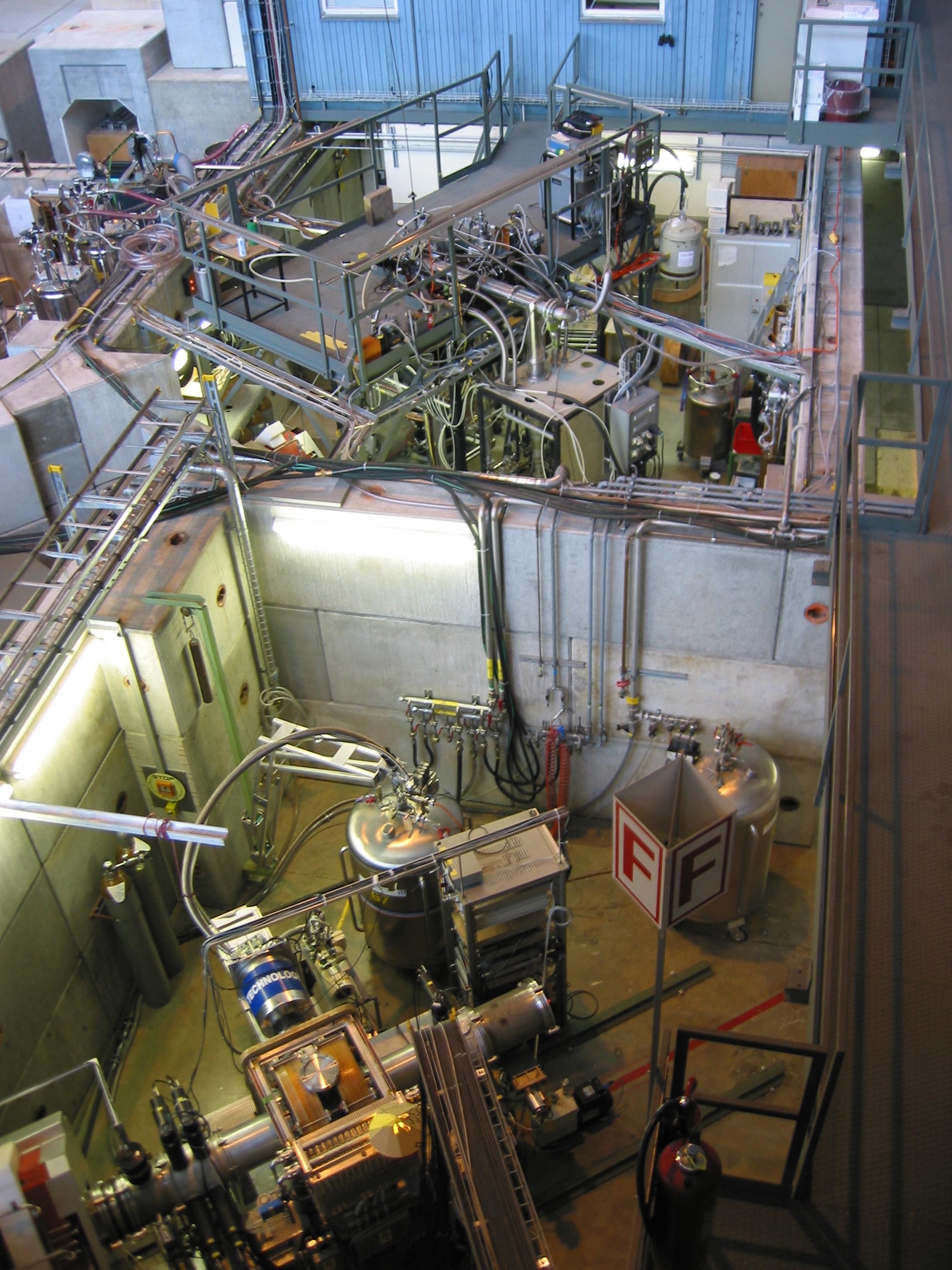Condensed Matter Physics
Overview
Condensed Matter Physics lies at the intersection between theory and practicality, with research often directly impacting real world devices and products. A project within CMP allows students to do in-depth work on one of a broad range of topics that the department researches.
 Fig.1 : Muon spectrometers at the Paul Scherrer Institute, Switzerland
Fig.1 : Muon spectrometers at the Paul Scherrer Institute, SwitzerlandCMP is studied using a range of methods. Projects can involve setting up and running your own experiments, where often students are working as a smaller part of a larger research group within the department. Some projects are more theoretical, with work being done to figure out the mathematical basis for real phenomena, before comparing predictions to real life data.
Other projects instead involve running simulations, where computational models predict results, which are then compared to measured data. Whatever project you do, it all goes towards the larger projects research groups throughout the department are undertaking.
Quotes:
“L4 Project is the highlight of Durham Physics. Experimental L4 Projects in CMP give a fantastic insight into working within a research group with a strong community and provide vital equipment skills for pursuing a career in industry”
"CMP projects have a lot of freedom in what you can do. In my project I was equipped with computational tools and was free to choose what materials/chemistry I wanted to investigate. This can lead to work being very interdisciplinary, in my case between physics, chemistry and even earth science!”
Projects:
Projects are updated regularly, but previous project topics have included:
- The role of Se diffusion in CdSeTe thin-film photovoltaics
- CdTe is widely used as a thin-film photovoltaic that is considerably cheaper than traditional silicon solar cells. Its efficiency has recently been improved through alloying with Se. This project models Se diffusion into CdTe, and its effect on the device properties, with a view to optimising the processing conditions.
- How do muons detect dynamics in battery materials?
- Muons are used as probes in condensed matter physics because their spins interact with magnetic fields. This project investigates how muons can be used to detect time-dependent ionic motion in materials and involves building computer models to predict how different varieties of ionic diffusion affect the polarization of muons spins. The models are then applied to measured data to analyse how excitations in battery materials can be probed and investigated and what this tells us about the materials' potential for use in novel battery technologies.
- Flexible Spintronics: Optimising Perpendicular Magnetic Anisotropy for flexible thin film magnetic materials
- For flexible electronics the integration of a workable non-volatile magnetic memory would add a new capability. This experimental project will undertake a comparative study on flexible and rigid substrates of magnetization switching and anisotropy in thin-films of ferro- and ferri-magnetic thin films based on magnetic transition metals layered with different heavy metals.


/prod01/prodbucket01/media/durham-university/departments-/physics/teaching-labs/VT2A9034-1998X733.jpeg)